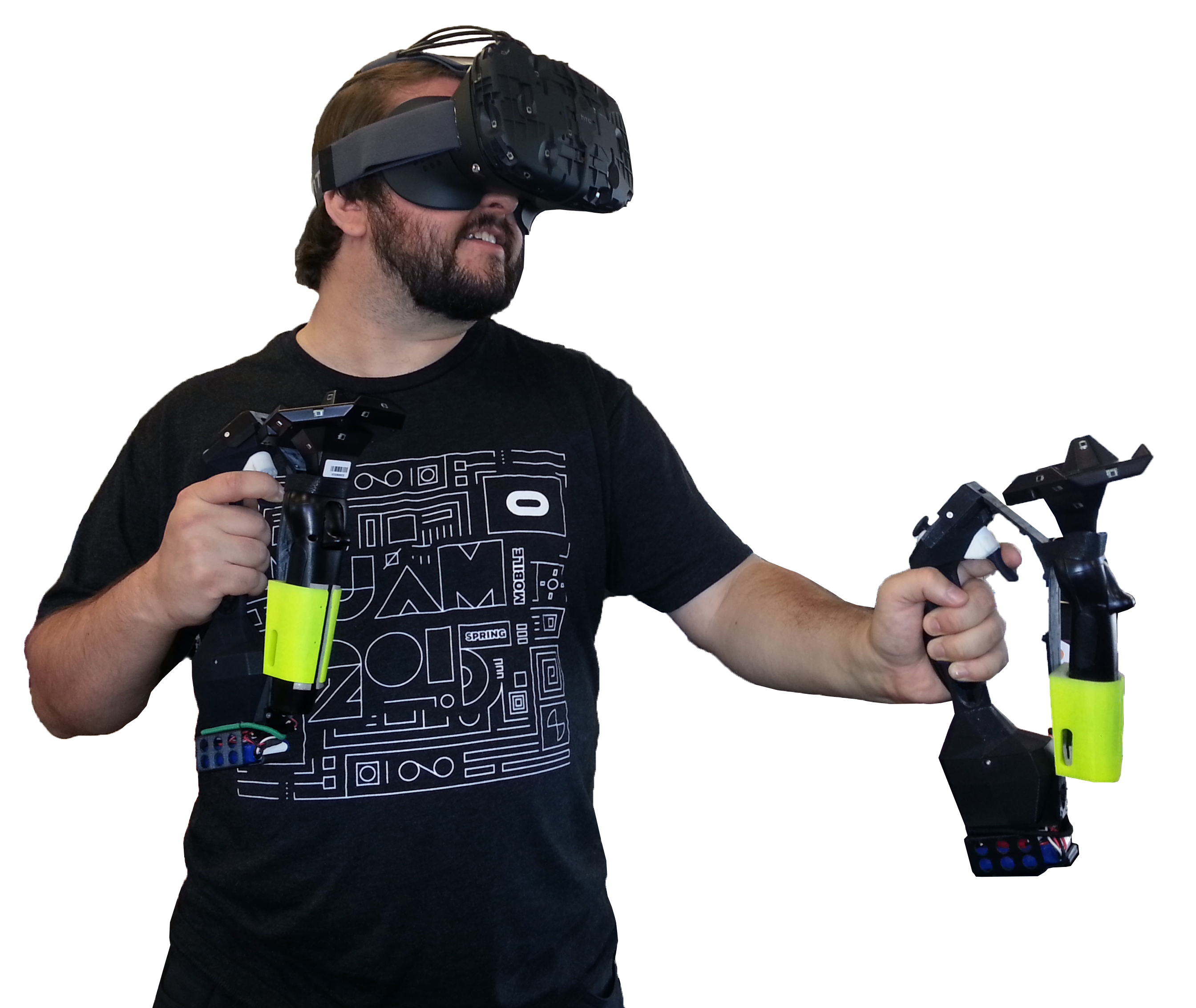Tactical Haptics Raises $2.2M For 'Immersive Touch Feedback' In VR
Tactical Haptics announced that it raised $2.2 million--roughly $1.5 million from private investors and $749,000 in a grant from the U.S. National Science Foundation--to expand its team and hasten development of its "immersive touch feedback" system for VR games and other experiences.
The company said its first priority would be the creation of a dev kit that will allow others to build support for its tech into their VR software. This kit would include mini-games designed to highlight the system's capabilities and would also be used to replace the HTC Vive's and Oculus Rift's controllers. NSF gave Tactical Haptics two years to produce a minimum viable product that showcases its potential, so we should get to see this dev kit by 2018.
Here's how the company described its system in this announcement:
Current haptic interfaces are either too expensive, have limited range of motion (force feedback devices), or are too crude (rumble) to portray a broad range of realistic haptic interactions in VR. Tactical Haptics has created an ungrounded haptic motion controller that utilizes a new form of touch feedback that applies in-hand shear forces to create compelling physical feedback at a price that is viable for consumer markets.
These shear forces are supposed to mimic the physical feedback that comes from touching real-world objects. Tactical Haptics said the system offers "a realistic experience of the stretch of a bow and arrow, the inertia of a ball swinging on a chain, the impact of a ball on their virtual tennis racket, the tug of a fish in a fishing game, or the kick of a gun in their favorite shooter game." It's basically making virtual objects "feel" like their physical counterparts.
The system works by using motion-tracking tools. Tactical Haptics' tech then slides small plates on a VR controller to "recreate the friction and shear forces" that occur when we touch physical objects. Combine this with better sound systems and VR HMD displays, and playing a game in VR could become much more immersive than it is today.
Of course, Tactical Haptics isn't the only company working to make interacting with virtual objects more realistic. NeuroDigital revealed gloves with a similar purpose in 2015, and Leap Motion's Interaction Engine is trying to tackle the problem from the software end. Touch is a big part of immersive VR experiences, so it makes sense for companies to race to build a system that better simulates the feeling of physical objects in a virtual environment.
Get Tom's Hardware's best news and in-depth reviews, straight to your inbox.

Nathaniel Mott is a freelance news and features writer for Tom's Hardware US, covering breaking news, security, and the silliest aspects of the tech industry.
-
wifiburger oh yeah we're not even at mass critical adoption of VR headset which history tells us that 99.9% of population refuse ; now we're at the point of adding something to a early product,Reply
i'll pass and it reminds me why people like to stick to consoles, the open market is a mess !
